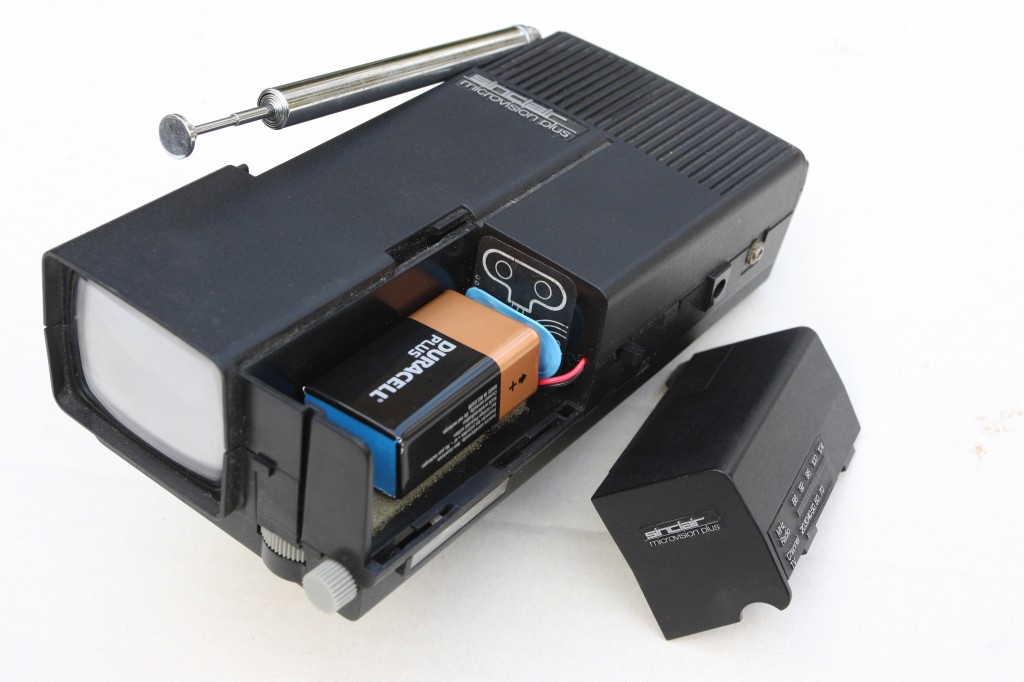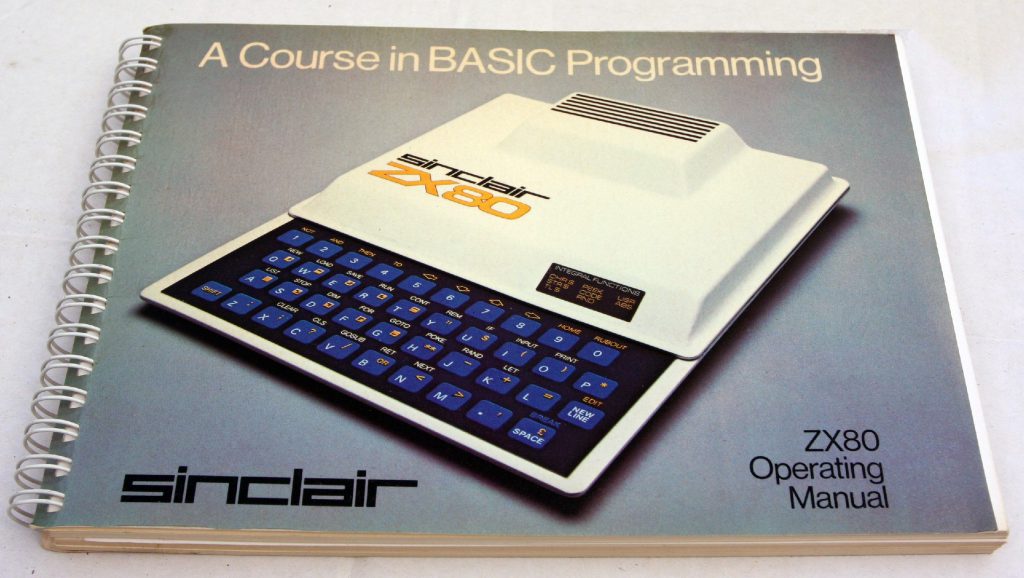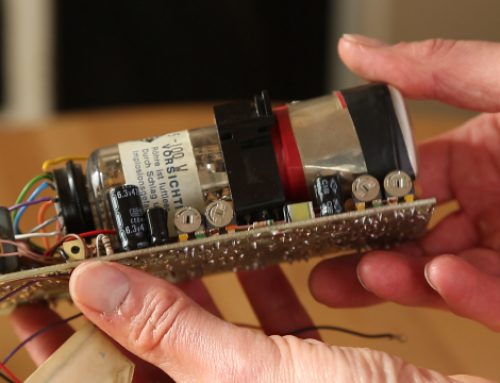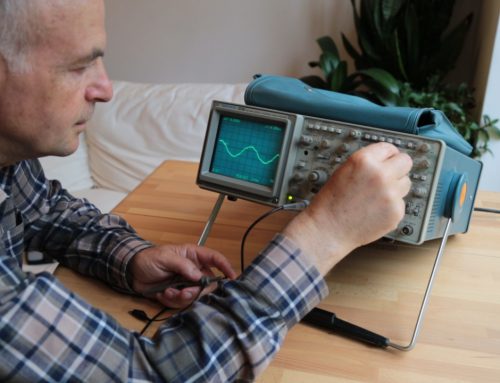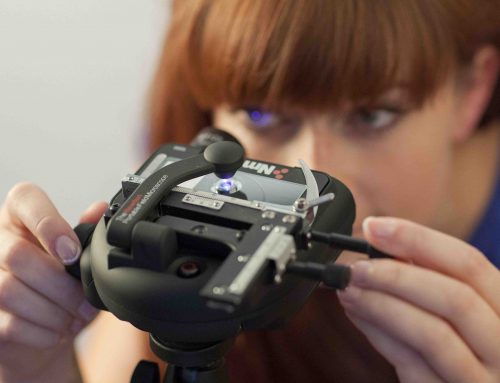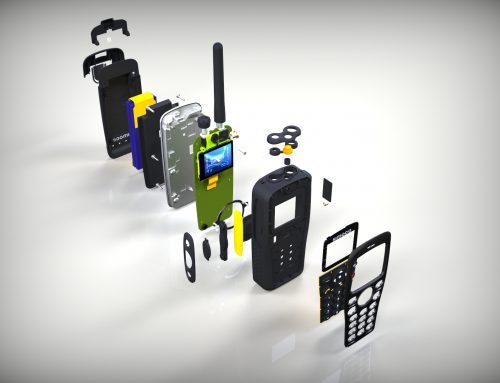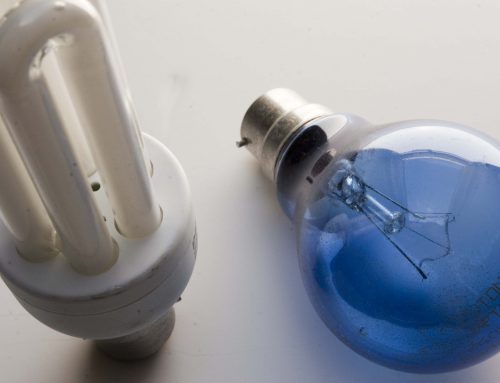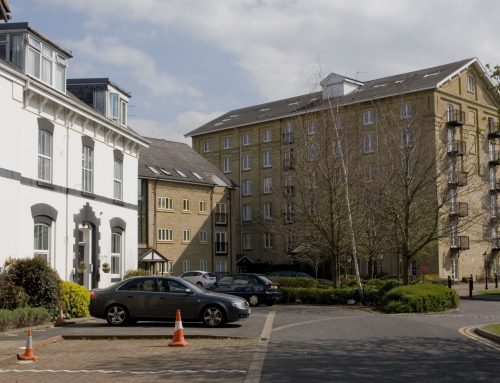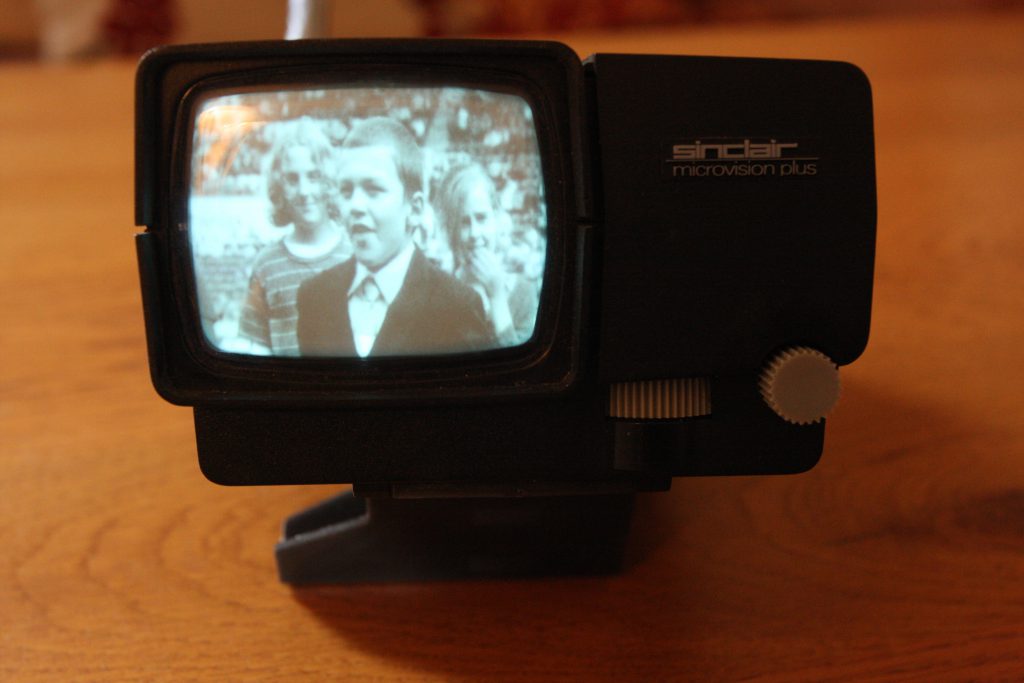
TV1B shot taken April 2011, before the analogue signal turn off. Even without being switched on for 20 years, it still works!
From The Mill To Kings Parade
By the late 1970s the National Enterprise Board decided that they had ploughed enough millions into Sinclair Radionics and were going to break up the company. Basically they were not going to support us because the television had not sold very well and there were severe cash problems. So they looked at one part of the company, which was the instrumentation – it made lots of instruments including multi-meters, frequency counters; all sorts of things that had been going on over the years which I wasn’t really involved in – and that became Thurlby Thandar and went in one direction.
As for Sinclair, he said he was going to do something in Cambridge and they just gave him a golden handshake and probably thought he’d go off, fail on some silly enterprise and that would be the end of him. He told them he’d need to take a few engineers with him. I think part of the deal was that he had to move out of the mill, but there were still people in the department at the bottom where the flat tube design was going on. They were being funded by some other government research grant, so Sinclair was actually still able to finance development and kept that going, while moving the rest of us into Kings Parade in Cambridge.
He took four engineers of whom I was one. There was also Peter Mayhew, who was like my right-hand man and had been working with me on other projects. He joined the test department in about 1972, but transferred to R&D to assist me on the TV, probably around 1975. He was more like a technician than a design engineer.
There was Jim Westwood who was basically my line manager, and there was an industrial design engineer called Rick Dickinson. Chris Curry had been running Acorn from that office, and a couple of his secretaries stayed on to work with us. And Sinclair also brought a secretary with him. We were all at Kings Parade, but there were other people from outside agencies who worked on the software for the ZX80, but I don’t know when they became involved.
There were actually two or three engineers who joined Sinclair Radionics in about 1973 to work on computing, because Sinclair had had the foresight to get into computing even back then. I don’t know what the plan was but he had them messing around with programming languages. I didn’t know anything about it in those days because the microprocessor had only just been invented. But when there was a bit of a cash-flow problem a certain number of mechanical engineers, which included these programmers, had to be laid off. There were always people coming and going.
Chris Curry had moved out by the time we got to King’s Parade. I knew nothing about his projects, but the MK14 microcomputer kit was still going so one of my jobs was servicing and fixing MK14s that had been sent back. I didn’t know anything about them; it was something Chris had set up, but there was obviously still some connection. The company I was in at that point was called Sinclair Research Ltd, so I’d moved from Sinclair Radionics Ltd, to something else and then to Sinclair Research, and technically I was redundant and then re-employed again! I even got a little redundancy money, although actually I simply carried on working.
Old Obsessions
Even at that point, Clive Sinclair had still got this thing about making a television with an extremely reduced component count. The fact that we had not been selling them didn’t put him off. Just before I left the mill he’d come up with yet another minimal circuit design. Where he got the circuitry from I don’t know but we took out all the ICs we’d put in, which had been a successful design, and replaced them with about ten transistors. There was one in there that was the audio amplifier, the power supply regulator and the IF amplifier. It was a desperate attempt to reduce the manufacturing costs, because he was convinced that there was a market if the retail price was low enough. I don’t know if we actually did a board layout for it, but we crammed this alternative design into another prototype box, with a new tuner unit that used two transistors instead of a normal array.
A conventional system would have the local oscillator about 33MHz from the incoming sound carrier, but our tuner used a local oscillator which was only a few hundred KHz from the incoming sound carrier. This produced a lower intermediate frequency (IF) for the sound which, due to its low frequencies, could be easily amplified with low frequency transistors and decoded to produce audio.
But the problem with our design was that it didn’t have any image rejection. I was working on this and said I was concerned about doing the tuner unit that way because we were going to have problems when there were two signals coming from different transmitters. Without proper image rejection the receiver could pick up two signals at once if they were either side of the oscillator, and that might happen if the customer lived half-way between two transmitters. So I looked at the map of all the transmitters and there was a place near Wisbeach that was halfway between two of them. So, theoretically, if you were in that part of England, you could get this problem.
So Sinclair said, “Right, get in your car, drive out there and test it.” So I drove out onto this windy road out in the fens somewhere where I thought it was going to be, leaned on this gate, switched on the television and tuned it according to two little markers I’d positioned. I was amazed that I was getting a problem exactly as I’d predicted. I could see one picture and there was a second image interfering with it. You think these things out theoretically but somehow don’t imagine it will happen. So I went back and said that it had failed in that regard.
But it was a bit of a severe test. Yes, there might be a situation where two signals interfere, but what are the statistical odds across the whole country? How many customers would ever be in that position? There would be lots of placed in the UK where that could happen but it still might be a small percentage and everybody has a bit of a receiving problem anyway. I don’t know if what I said killed the project, but it did get killed. That was just before we had to vacate the mill.
After we arrived at Kings Parade there was still a period of time when Sinclair was looking at a tube from a Russian dealer and I was working on another television design. I thought ‘Are you ever going to give up on this television thing? It didn’t sell and you haven’t got the resources to do it now.’ But, after we’d been there a little while, possibly a few months, he called a meeting. In the meeting was Jim Westwood, Rick Dickinson, me and Peter Mayhew, and he said to us “We are going to make a home computer and it is going to sell for less than £100. We will use a membrane for the keyboard, it’s going to use this molding for the casing and we are going to start working flat out to get it done by this date.”
I think I’d already done a bit of provisional work testing a membrane keyboard at that point and Sinclair might have already assembled the team of people who were working on the programming language – which a sort of cut-down Basic. It had also been decided that we were going to use a Z80 microprocessor made by Zilog, as that had been around for a year or so. There weren’t many microprocessors around, but they were being made to go in washing machines and anything that did a bit of processing, as is still the case today.
Sinclair had a specification which said the computer would use so much RAM and have an E-PROM inside with so much memory. It needed a certain amount of Logic that could be provided by off-the-shelf TTL logic chips, like counters and standard logic elements.
In fact, all the hardware comprised ready-made components so there were no dedicated chips – that’s how it was made so quickly. I remember that it had an ingenious method of using the refreshing circuitry in the microprocessor. The processor produces a number of signals to refresh the RAM chips – which is normal practice because it stops the memory chip loosing stored data – but these same signals were used for another purpose in the design which was particularly clever.
But perhaps the really clever bit was to get the basic language to go inside an E-PROM, which I think was basically an interpreter, and have the microprocessor run the program that is in the E-PROM to generate certain waveforms, which we then made use of to scan the keyboard. There was an RF modulator driving the monitor and the signal went out on channel 36, so someone had to produce all the software to raster an image on the TV set and have X and Y axis and all that sort of thing.
These software people from outside the company did that and, in some respects, they were actually the brains who did the real work! I knew very little about the software part back then, but I remember a chap coming in every so often and debugging because although they had done the software but still had to test it on the hardware we were building.
I think Jim Westwood was working on a tape drive so you could download software from an audio cassette tape. I had to do the PCB layout for the computer and the RAM pack that went on the back, work out the power supply, integrate a little crystal oscillator and get all the little bits together and make sure they worked. All of the practical stuff, basically. It’s very well having an idea but you have to get it to work. But I wasn’t part of the original design or concept, it was just given to me and I had to make it happen.
I don’t remember being involved in the production of it either, but I can tell you that they weren’t being manufactured in King’s Parade! Amazingly, we actually sold this thing as a kit that the consumer put together, and you can still find the unassembled kits on e-bay selling for something like £20.
I was getting a load of kits coming back at one point, usually because someone had tried to solder the parts together and made an awful job of it. I’d fix them and send them back out again. Most of it I could do by visual inspection; in a certain light I could see where they had created a solder bridge. I simply wiped over it with the iron and it invariably worked.
The ZX80 actually started making money for the company. I went along to the exhibition in London where they announced it. I’d never seen anything like it; there were so many people around the stand, it was incredible. When we were launching it, we had an instruction book that we were selling without the computer so people could find out about it. We took a big pile of them down there and decided to sell them for a fiver each, which was a lot of money back then, and they sold out. Just a book with no product! People were hungry for information. I can’t explain it, it was like bedlam; it was absolutely incredible.
Using the ZX80
The ZX80 was like an educational thing: you could practice your basic language on it by writing code and running little programs. Very shortly games came along, but right at the beginning you could make it do silly little things like print out a message and ask a question, so all the schools were quite interested and the computer sold like hot cakes.
So within a year of moving in to Kings Parade Sinclair was producing this thing and in the limelight again. After that we were trying to do the ZX81, for which, as I said right at the beginning, we took about 10 low-power Schottky TTL chips and put them into a dedicated IC that was going to be manufactured for us by Ferranti. I simulated it all by putting the chips onto a bit of vari-board with all the necessary pins around.
I think the IC was also going to do some of the functions a different way because there was a big failing in the ZX80. When you hit a key the microprocessor stopped generating the signal to the TV set and went off and got the message from the key and did some calculations, so suddenly you would have no signal going out and you’d get a flicker on the screen. That meant that there was a flicker every time you touched something, but you sort of got used to it and almost felt it was natural after a while!
But for a professional computer that sort of thing was absolutely not on, so what we had to do was get the Z80 processor to deal with the key scan and input as a background task. I think we had to do something to the hardware to get it to carry on generating the signal. I can’t remember exactly how we did it but it became possible when we integrated the circuitry into the Ferranti IC. But I’d already left the company before those chips arrived.
Deciding To Leave
I had got it in my head that I was going to leave at some point and a job came up closer to where I lived only a few miles away in St Neots. I thought it would be nice to not have to travel so far and it was also a job offering more money. I actually wasn’t terribly well paid while I was with Sinclair.
I could have stayed on because they didn’t want me to leave and after I left I bumped into one of the tube prototype lab engineers, called Robin. He was still working for them and told me that they’d really noticed my loss when I left. I also had Jim Westwood ring me up a couple of months after I left, suggest that maybe I would like to think about coming back, but I declined. But my leaving wasn’t too inconvenient because I’d almost finished the work I was doing, so I didn’t quite leave them in the lurch.
Sinclair himself never really said he didn’t want me to leave, I hardly ever spoke to him, but when I said I was going to leave, within a week it was announced that everybody was going to get a pay increase of ten percent, and that applied to me, even though I was leaving. As if I would turn around and stay because of that! But the company actually did better after I left because they came out with the ZX Spectrum and there was a big difference between that and the ZX81. The ZX81 was black and white, whereas the spectrum was colour, which was a big step forward. That must have taken some doing and I had no knowledge of what was involved in that.
After the ZX Spectrum success the company mushroomed enormously and there were new premises, corporate headquarters – the whole lot. They must have been very turbulent times, and exciting in a way. I missed all that, but I didn’t miss being there. The way the company went up and down; I don’t think the experience would have been pleasurable. I don’t know what would have happened to me, but ultimately I would have been out of a job when it crashed. I’ve not made a lot of money but I’ve always been working, had full employment and done alright where I’ve gone.
The ZX81 was probably very successful too because with the Ferranti chip they got their costs right down and could mass produce it. I think they stopped doing it as a kit and it really did take off. But it was the same basic interpreter as the ZX80, just with a different bit of hardware inside. They did have a tape drive to go with it so you could load in programs, and I think they upped the memory a bit too. The RAM pack was just a little circuit board with more RAM chips in it that plugged in the back off an edge connector. The basic RAM was 1K, which doesn’t sound like much now, and the RAM pack was 6K.
Sinclair Involvement
Clive Sinclair wasn’t very involved in getting the ZX80 working, but you have got to give him credit – he’s the one who identified that there was a market for a £100 computer and went for it. But he certainly knew about television and their design and got involved in that in all sorts of areas. His knowledge goes right back to when he was about 16 years of age and working as a freelance writer. He started to learn about transistors and built an FM radio.
And right back in the early days he recruited Jim Westwood when he was a 15 year old kid. Jim Westwood had few qualifications; Sinclair just taught him what he knew, and what he knew wasn’t a formal education. He got this hi-fi thing going and obviously got to the point where he could afford to move to new premises in St Ives.
I should also say that Sinclair had a director working with him, called Michael Pye, whose name doesn’t get mentioned much. He came from Texas Instruments, but became a director of the company back in about 1973. When I was working on hi-fi he was technical director and had a lot to do with the calculators. He went over to the States to set up Timex Sinclair to manufacture and market calculators over there. He was a really nice bloke and Adrian Espin, who had also come from Texas Instruments, got on with him well. In a way, we were sort of reporting to him at one time, but I don’t know where he was by the time I went to Kings Parade.
Beyond Kings Parade
By 1990 the company had collapsed down to the point where, instead of having several hundred people, there were two people working there. Clive Sinclair was in London and there was Jim Westwood in Cambridge, doing something or other in the shell of the company that was left over. I was working at Dwight Cavendish then and phoned him up to ask if he’d be interested in working for us, but he said he was working as a consultant on a good wage. So somehow he was still getting work and there was no point leaving. But he’d not made a fortune out of it.
I said to him “If you’d sold some of your shares you’d have been a multi-millionaire,” but he couldn’t really while he was working there. Clive Sinclair himself sold five or ten percent of his shares when the company was worth something like £400 million, and used that to develop the C5 electric car using a separate company. Nobody else was going to put money into it so he did when he had the money, and then lost it, of course.
The last time I saw Jim Westwood was at an exhibition about 10 years ago when he was a freelance design engineer working for someone in Cambridge. I used to give Pete Meyhew a lift in when we worked at Cambridge, but I didn’t see him for donkey’s years after I left. I think he got himself transferred to the team who were working in St Ives. I don’t think he had any means of transport so it must have been difficult for him when I left. But every now and then I see him in Waitrose and he must know who I am, although I’ve changed quite a bit.
I’ve given some of my perspective on the way things were, but I could be wrong because I wasn’t always party to what was going on, I was just an engineer working there. TF
Part 1 of Engineering for Sinclair can be found here: Part 1
Part 2 of Engineering for Sinclair can be found here: Part 2


